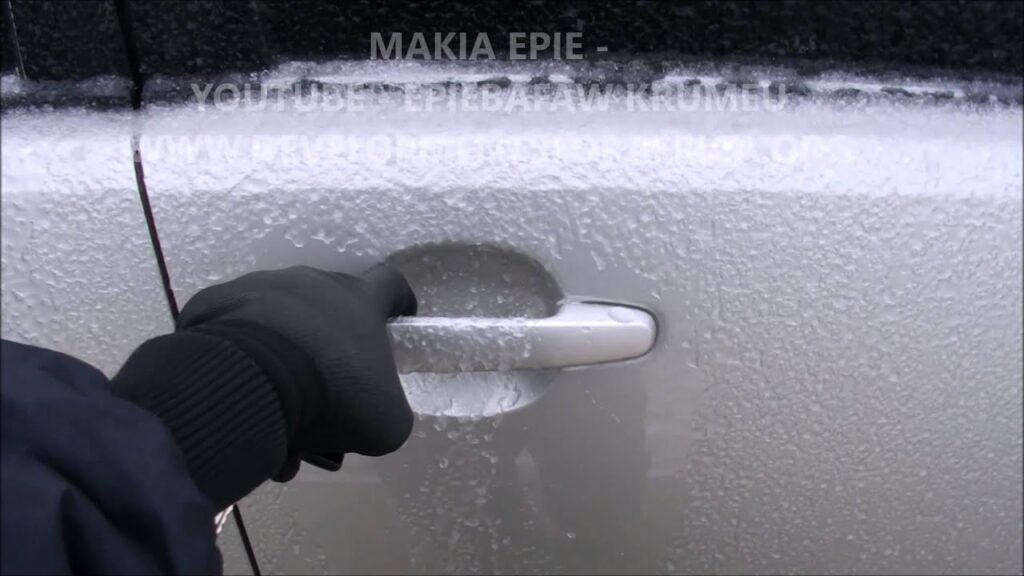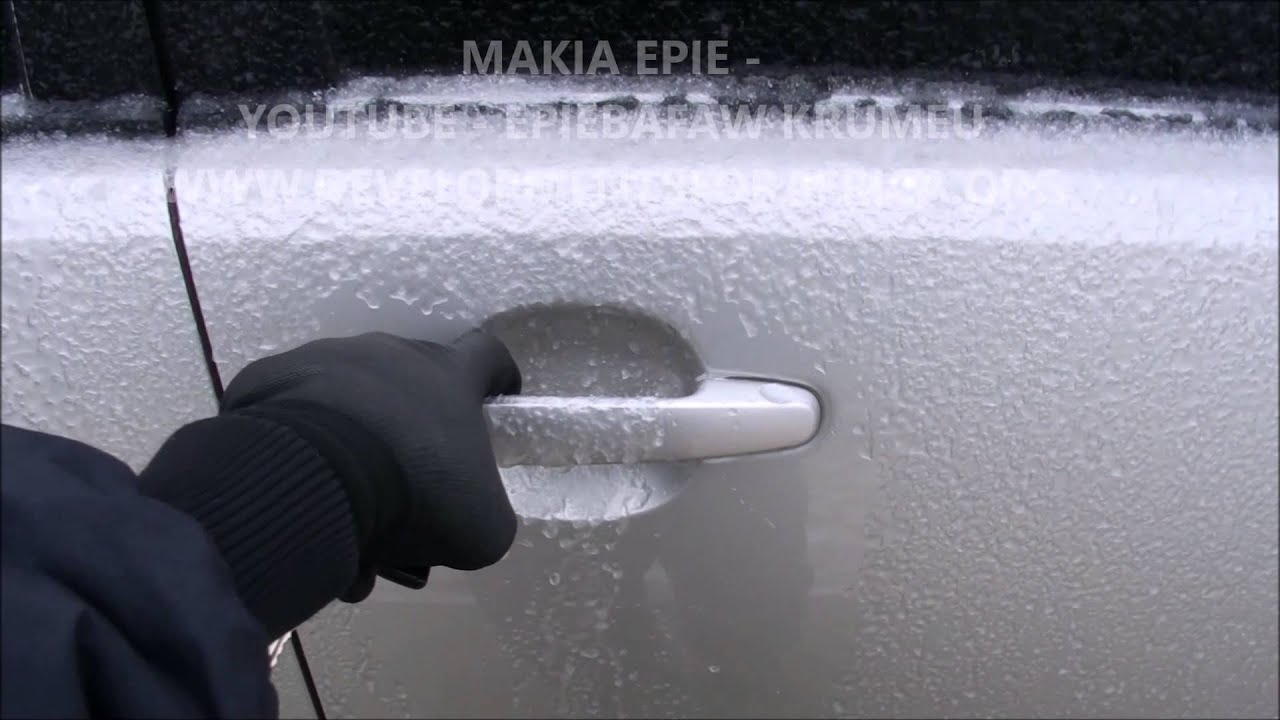
Unlocking the Mystery of Frozen Locks: Prevention, Solutions, and Expert Tips
A frozen lock can be a frustrating and inconvenient experience, especially during the harsh winter months. Whether it’s your car door, house entrance, or even a padlock on a shed, a frozen lock can bring your day to a standstill. Understanding why locks freeze and knowing how to deal with them effectively is crucial for anyone living in a cold climate. This comprehensive guide explores the causes of frozen locks, provides practical solutions, and offers expert tips to prevent them from happening in the first place.
Understanding Why Locks Freeze
The primary culprit behind a frozen lock is moisture. Water, in its various forms (rain, snow, sleet, or even condensation), can seep into the intricate mechanisms of a lock. When temperatures drop below freezing (0°C or 32°F), this moisture turns into ice, effectively jamming the lock’s internal components. Several factors contribute to the likelihood of a frozen lock:
- Exposure to the Elements: Locks exposed directly to rain and snow are more susceptible to freezing.
- Temperature Fluctuations: Repeated cycles of freezing and thawing can exacerbate the problem, as melting snow turns to water and refreezes in the lock.
- Lack of Lubrication: A dry lock mechanism is more prone to trapping moisture and subsequently freezing.
- Lock Design: Some lock designs are inherently more susceptible to water ingress than others.
Immediate Solutions for a Frozen Lock
When faced with a frozen lock, immediate action is needed to regain access. Here are several methods to try:
Using a Lock De-Icer
Lock de-icers are specifically designed to melt ice within the lock mechanism. These products typically contain alcohol or other solvents that lower the freezing point of water. To use a lock de-icer:
- Insert the nozzle of the de-icer into the keyhole.
- Spray a generous amount of the solution into the lock.
- Wait a few moments for the de-icer to work.
- Insert your key and gently try to turn the lock. Avoid forcing it, as this could damage the key or the lock mechanism.
- Repeat the process if necessary.
Heating the Key
A simple yet effective method involves heating your key. This can be done using a lighter or a match. Here’s how:
- Heat the key, focusing on the blade portion, for a few seconds. Be careful not to burn yourself.
- Gently insert the heated key into the lock.
- The heat from the key will help to melt the ice inside the lock.
- Wiggle the key gently to help break up the ice.
- Repeat the process if needed, reheating the key each time.
Caution: Avoid using excessive heat, as this could damage the key or the lock. Also, be mindful of flammable materials nearby.
Using a Hair Dryer
A hair dryer can be used to gently warm the lock and melt the ice. This method is particularly useful for car door locks or house entrance locks where an electrical outlet is accessible. To use a hair dryer:
- Set the hair dryer to a low or medium heat setting.
- Direct the warm air towards the lock for several minutes.
- Periodically try to insert and turn your key.
- Continue heating until the lock thaws and the key turns smoothly.
Caution: Avoid using high heat, as this could damage the lock’s finish or internal components. Also, be careful not to get the hair dryer wet.
Warm Water (Use with Caution)
While warm water can melt ice, it should be used with caution. The water itself can refreeze if the temperature is low enough, potentially worsening the problem. If you choose to use warm water:
- Use lukewarm water, not boiling water.
- Pour a small amount of water directly into the keyhole.
- Immediately try to insert and turn your key.
- Dry the lock thoroughly after use to prevent refreezing.
Caution: Avoid using hot or boiling water, as this could damage the lock mechanism or cause it to crack. Also, be prepared to dry the lock thoroughly afterwards.
WD-40 (Temporary Solution)
While WD-40 isn’t a de-icer, it can displace moisture and temporarily free a frozen lock. However, WD-40 can attract dirt and grime over time, potentially leading to future lock problems. To use WD-40:
- Spray a small amount of WD-40 into the keyhole.
- Insert your key and gently try to turn the lock.
- Wiggle the key to help distribute the WD-40.
- Wipe away any excess WD-40.
Note: WD-40 is a temporary fix. For long-term prevention, use a proper lock lubricant.
Preventing Locks from Freezing
Prevention is always better than cure. Taking proactive steps to prevent your locks from freezing can save you time and frustration. Here are some effective prevention strategies:
Lubricating the Lock Regularly
Regular lubrication is key to preventing frozen locks. Use a specialized lock lubricant, such as graphite powder or silicone-based lubricant, to keep the lock mechanism moving smoothly. Avoid using oil-based lubricants, as they can attract dirt and grime.
To lubricate the lock:
- Insert the nozzle of the lubricant into the keyhole.
- Spray a small amount of lubricant into the lock.
- Insert your key and turn it several times to distribute the lubricant.
- Wipe away any excess lubricant.
- Repeat this process every few months, especially before the winter season.
Covering Exposed Locks
Protecting locks from direct exposure to the elements can significantly reduce the risk of freezing. Consider using lock covers or shields to protect your locks from rain and snow. For example, car door locks can be covered with keyhole covers, and padlocks can be shielded with weatherproof housings.
Using a Lock Defroster
Consider purchasing a portable lock defroster. These small, handheld devices use heat to quickly thaw frozen locks. They are particularly useful for car door locks and can be kept in your glove compartment for easy access.
Applying a Water Repellent
Applying a water repellent to the lock’s exterior can help prevent water from seeping into the mechanism. Look for water repellents specifically designed for metal surfaces.
Parking Your Car Strategically
If possible, park your car facing east in the morning. The rising sun can help to thaw any ice that may have formed on your car door locks overnight. Alternatively, park in a garage or under a carport to protect your car from the elements.
Choosing the Right Locks for Cold Climates
The type of lock you use can also affect its susceptibility to freezing. Some locks are designed to be more resistant to water ingress and freezing temperatures. When choosing locks for outdoor use in cold climates, consider the following:
- Weather-Resistant Locks: Look for locks that are specifically labeled as weather-resistant or weatherproof. These locks are designed to withstand harsh environmental conditions.
- Sealed Locks: Sealed locks have a protective seal that prevents water from entering the lock mechanism.
- Tumbler Design: Locks with fewer tumblers are generally less prone to freezing, as there are fewer internal components for ice to form on.
- Material: Locks made from stainless steel or brass are more resistant to corrosion and rust, which can exacerbate freezing problems.
Long-Term Lock Maintenance
Proper lock maintenance is essential for ensuring that your locks function smoothly and reliably, especially in cold climates. In addition to regular lubrication, consider the following maintenance tips:
- Clean the Lock Regularly: Use a dry cloth to wipe away any dirt or debris from the lock’s exterior.
- Inspect the Lock for Damage: Check for signs of corrosion, rust, or wear. Replace any damaged or worn parts promptly.
- Replace Old Locks: Over time, locks can become worn and less effective. Consider replacing old locks with newer, more weather-resistant models.
When to Call a Professional Locksmith
In some cases, a frozen lock may be beyond your ability to fix. If you have tried the above solutions and are still unable to unlock the lock, it may be time to call a professional locksmith. A locksmith has the tools and expertise to safely and effectively unlock a frozen lock without causing further damage. [See also: Emergency Locksmith Services] Additionally, if you suspect that the lock is damaged or malfunctioning, a locksmith can diagnose the problem and recommend the appropriate repairs or replacements.
Conclusion
Dealing with a frozen lock can be a frustrating experience, but with the right knowledge and tools, you can effectively address the problem and prevent it from happening again. By understanding the causes of frozen locks, implementing immediate solutions, and taking proactive prevention measures, you can ensure that your locks remain functional and reliable, even in the coldest of weather. Remember to lubricate your locks regularly, protect them from the elements, and choose weather-resistant locks for outdoor use. With these tips, you can confidently navigate the winter months and keep your locks working smoothly.

